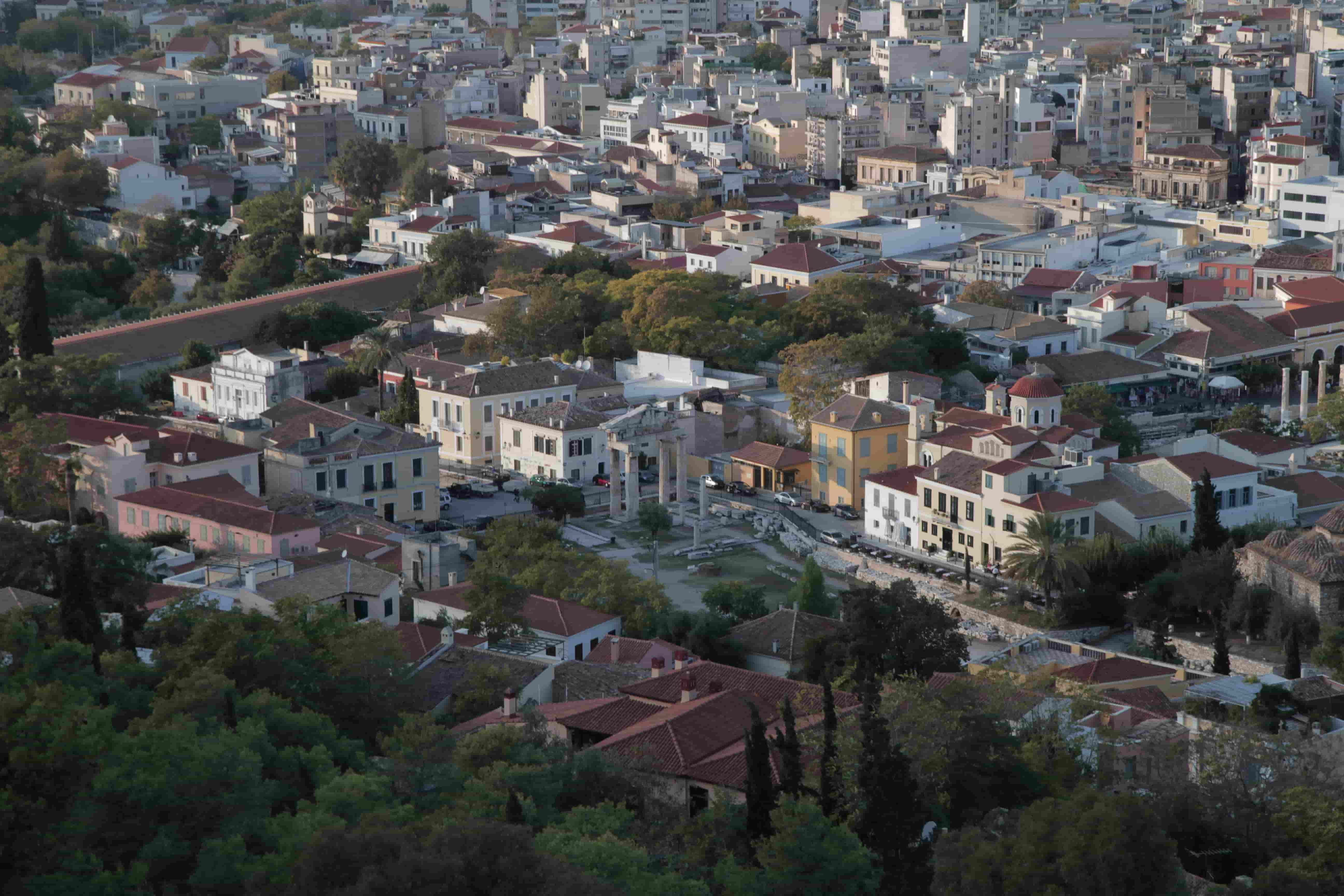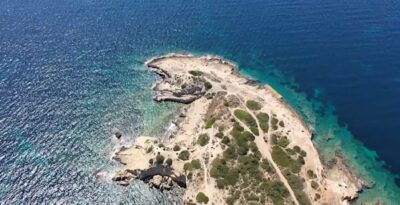Picturesque Anafiotika
At Anafiotika you will feel like being in a Greek island in the middle of Athens
Anafiotika is one of the historical treasures of Plaka, the picturesque iconic neighborhood of Athens. When strolling in the alleys of Anafiotika you are taken back in time, just meters away from the crowded Athens center.
It is built in the Cycladic architectural style by the builders that arrived here from the island of Anafi to build the Palace of King Otto in the 19th century. Most of the original village was destroyed in 1950 for archaeological research and today only about 45 houses remain.
Unfortunately many tourists who visit here miss the experience of wending their way through the tiny lanes to enjoy the magnificent viewpoints over the red-tiled roofs of Plaka across the vast expanse of what is greater Athens.
Even though quite a few tourists find their way to the Anafiotika, there are no souvenir shops or tavernas. It is quiet and isolated, an oasis in bustling Athens.
Eating Souvlaki
Humble but mouth-watering, who can resist a good souvlaki?
Greece is well known for its delicious cuisine and healthy Mediterranean diet, but what about its fast food? Everyone who has visited the country has tasted at least once the famous “souvlaki” or “souvlaki with pita” or “pita gyros,” three dishes combining meat in a very tasteful dish that has become a trademark of the modern Greek culture over the years.
Whether to take away, eat it out on the curb or just sit in the shop and enjoy it at your leisure, souvlaki and pita gyros have become the most popular, convenient, and cost-effective food option someone can come across in Greece. This great tasting food is not only filling but combines all the ingredients a dietician would recommend: protein in the meat, vegetables in the form of chopped tomatoes and carbohydrates in the delicious pita bread.
In…Souvlaki-land it goes without saying that the competition between souvlaki places is relentless, which means that you can find good souvlaki almost everywhere in Greece. There are however some spots, like the Monastiraki-Plaka area in the center of Athens, that has become almost synonymous with this mouth-watering, everyday food. Don’t miss it!
The View On Mars Hill
Areopagus Hill: Immerse in history while enjoying panoramic views
What to see in Athens apart from the Acropolis and other top sites? This is a common question among visitors while in Athens. A visit to the Mars Hill, or Areopagus in ancient and modern Greek, rewards us with panoramic views and the history that lies behind the monument.
The Areopagus is a bare marble hill across from the entrance to the Acropolis and its ancient marble steps can be slippery, especially in the rain, so wear appropriate shoes! In pre-classical times (before the 5th century BC), the Areopagus was the council of city elders, like the Roman Senate, while in classical times, it functioned as the chief homicide court of Athens.
The Areopagus, like most city-state institutions, continued to function in Roman times, and it was there that the Apostle Paul delivered his historical speech about the identity of “the Unknown God”. Near the base of the stairs there is a bronze plaque with the Greek text of Paul’s sermon.
Walking in Monastiraki
Monastiraki: a harmonious blend of tradition, shopping and relaxation
Monastiraki is where the heart of Athens beats, an old part of the city which nestles under the Acropolis. Monastiraki square is the hub of life in the area and the main street leading off will take you to narrow alleys with a thousand artifacts to buy and sell.
Right at the square is the Monastiraki Metro station which makes this area very accessible from wherever you are coming. At its centre lies Avissinias square, where the main flea market of Athens is held since 1910, the place to be on Sundays when it seems every Athenian is here either buying or selling.
This traditional market has a festive atmosphere and its permanent antique and collectables shops are open all week. Adrianou street facing the Acropolis and the Attalos Stoa are two of the best places to relax and enjoy the scenery at one of the numerous cafes and restaurants.
On one corner of Monastiraki square looms a relic of the Ottoman occupation, the Mosque, built in 1759. Next to the metro station and just a little west of the Roman Agora you will find Hadrian’s library, built in 132 A.D. by the Roman Emperor.
A Walk In Plaka Area, Close To Acropolis Hill
Plaka, the heart of old Athens, takes you to a trip back in time
Plaka, located under the Acropolis, has a history of more than 3.500 years and its charming atmosphere is felt all around the narrow streets, the ancient ruins, the Byzantine temples and the renovated neoclassical buildings, homes of the affluent Athenian society in the late 19th and early 20th centuries.
Apart from the sheer pleasure to walk around, there are important archaeological sites to visit like the Roman agora, Hadrian’s Library, the Bath of the Winds (Aerides) and the Attalos Stoa housing a great collection of artefacts that were found in the area of the ancient Agora.
If you walk up the steps from the south slope of Acropolis you will find Anafiotika, an amazing settlement with small whitewashed houses built in the Cycladic architectural style.
Strolling in the small winding streets you get carried away in the islands of the Cyclades, losing the sense that you actually are in the centre of the busy Greek capital. In Plaka there are numerous quaint taverns and cafes as well as jewelry shops, art galleries and tourist shops.
A Day In the War Museum Of Athens
The history of war in Greece in one museum in the center of Athens
If you pass by stationed warplanes right in the centre of Athens you probably are outside the War Museum at the junction of Vasilisis Sofias avenue and Rizari Street.
You don’t need to be a weapons’ aficionado to visit it, as the museum houses an extensive range of exhibits relating to the history of war in Greece as well as some relating to wars in other nations.
From weapons and uniforms to maps and prints, the Athens War Museum covers many time periods, from prehistory to World War II, including an exhibit about Alexander the Great.
The museum has a rich library whose entrance is in the courtyard with the stationed warplanes and a photographical archive with over 20,000 photos of the history of the Greek armed forces.
Great Friday In Athens
Easter is a unique occasion to explore Greek traditions and customs
Easter is a great time to be in Greece for many reasons. First of all even if you are not a devout Christian you can’t help but be moved by the ceremonies and the way life begins again on Easter Sunday after winter and 40 days of fasting.
Local customs, the Ionian marching bands, the Epitaphs that the parish women spend all night decorating on Holy Thursday, the solemn Good Friday processions, the Ascension ceremony on Easter Eve with its candles and fireworks, the Paschal lamb on the spit, and the services in churches, monasteries and chapels will entrance and uplift you.
Spring in Greece is a celebration – and Easter is the pinnacle of this celebration!From the point-of-view of a spectator, from Friday it starts to get very interesting. In the evening a funeral service is held and at about 9pm the epitaph is taken from the church and with the bells tolling mournfully, is carried through the streets in a solemn procession.
In cities, towns and villages with more than one church the epitaph parades may join together at certain points. Easter traditions are as numerous and varied as the different towns and villages of Greece.











